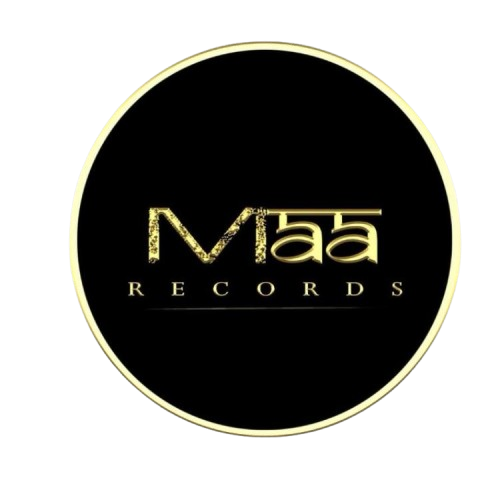Tips for Recording Vocals Like a Pro in Any Studio
A good recording of vocals is the making of music, but more than just a good voice goes into making a professional sound. Be it a fancy studio or simple home set-up, the right tricks applied will make a great difference in the end. This guide will present some good tips to help you get clear, strong, and professional vocals irrespective of where you do your recording.

- Warm Your Voice
Preparing your voice before you stand in front of the microphone is paramount; so, when it comes to doing it, proper preparations should be made. Vital steps include:
- a) Warm-Ups
Just like any athlete warms up before a game, a singer must warm up the vocal cords before any recording. Some possible warm-up exercises are:
- Lip trills and humming to relax the throat
- Gentle scales to start expanding one’s range
- Breathing exercises to improve control and stamina
- b) Hydrate
Drinking water keeps the vocal cords hydrated, so there is no strain and cracking. One should avoid caffeine and dairy before a recording, as they contribute to mucus build-up.
- c) Rest Your Voice
Do not shout, talk too much, or sing loudly for a few days before the session. Rest your voice so that it is in the best condition for recording.
2. Choose an Appropriate Studio Environment
The location of recording counts significantly towards how the not-so-good singer would sound while singing. A poor acoustic space can provide struggles even for a good singer.
- a) Soundproofing and Acoustics
Maa Records will guarantee soundproofing in the true sense of the word and an acoustic treatment that minimizes unwanted echoes and background noise. If you are recording at home, you can use:
Acoustic foam panels
Heavy drapes or blankets to reduce reflections
A portable vocal booth or isolation shield for clean recordings
- b) Keep Background Noises to a Minimum
Microphones are capable of picking up any sound. Maintain silence as you work. Flush any sounds made by fans, ACs, or any other distracting appliances prior to recording.
- Choose the Right Microphone and Equipment
The microphone and equipment used can either make or break your vocal recordings.
- a) Selecting a Microphone
Microphones have a varied way of capturing vocals. Two most common types are:
Condenser microphones—Best suited for studio recordings owing to their sensitivity and clarity. Examples: Neumann U87, AKG C414, Rode NT1-A.
Dynamic microphones—Best for gigs or louder vocals. Examples: Shure SM7B, Electro-Voice RE20.
- b) Use a Pop Filter
A pop filter is used in preventing the intense plosive sounds of “p” and “b” from interfering with the recording. It will also keep saliva off of your microphone.
- c) Mic Positioning
The microphone position will affect how clear and tonally pleasing your vocals sound. Keep these things in mind for best results:
Stay 6-12 inches from your mouth.
Keep the mic angled slightly off-centre to avoid accentuating any harsh frequencies.
Distance adjustment to control dynamics-warmth when close, and airy when farther away.
4. Perfect Your Vocal Performance
To have phenomenal vocal recordings, it is a combination of technical setup and performance.
- a) Activate Emotion with the Song
One reason the artists from Maa Records flourish is that they bring emotion into their vocals. Your vocal performance should reflect the song’s mood, whether that is sad, joyful, or uplifted.
- b) Control Breathing
It is essentially important to gain breath control during recording for a sweet, smooth touch-professional kind of sound. Here are a few suggestions:
Take controlled, deep breaths before long notes.
Try proper phrasing to not break awkwardly for breath.
Slightly compress your breath levels.
Record Multiple Takes
Even the best artists will mull through the songs before they actually think they have performed the best; they seldom just take one. Do 3-5 takes, then piece together the best bits in the edit.
- Adjust Your Recording Settings
The particulars of your DAW are paramount when it comes to the sound of your vocals.
- a) Sample Rate and Bit Depth
Assuming you want to record top quality, set your DAW to:
Sample Rate: 44.1/48 kHz
Bit Depth: 24-Bit; it is the best for high-quality audio.
- b) Gain Staging
Set your input gain correctly, and do not allow distortion or low output situations. –18dB to –12dB is a good level to leave headroom for mixing.
- c) Record Dry
Record without tooo much effect (heavy reverb or delays); it’s best to put any effects on during the mixing stage; it’s harder to fix if anything is too processed at the recording stage.
Once you finish a lovely vocal take that you are happy with, the next step is editing and mixing.
- a) One would want to clean up his track. That would imply taking out any distractions such as:
Clicking sounds from the mouth
The sound is more like background noise.
Noise from breaths: the unwanted, unnecessary ones.
- b) Compression for Balanced Volume
The voice compressor should be treated as any other tool to control a voice’s dynamics; softs get louder while loud get soft.
Begin with the following settings:
Ratio 3:1-4:1
Attack: 10-20ms
Release: 40-60ms
- c) Use EQ For A Cleaner Sound
Another beautiful thing that EQ does is set the vocals in the mix. What could do one quite basic is, i.e.,
Cut Off Any Low Frequencies (Below 80Hz): Only Trap Rumbles
Boost 2kHz-5kH for clarity
Brightening up with 10kHz-15kHz high-end sparkle for a clear sound
- d) Add Effects
Use reverb and delay to an extent to give depth. Be cautious not to overdo it, or vocals will sound washed out.
- Work with a Professional Studio like Maa Records
Working with a professional recording studio like Maa Records will totally change the game if you are after the best possible quality vocally. Here’s why:
- a) Class-A Equipment and Acoustics
Maa Records has top-of-the-line microphones and preamps and a soundproof studio for unparalleled recording quality.
- b) Professionals with Sound Engineering
The studio has a crew of well-trained sound engineers who would make sure your vocals are polished and ready for the industry.
- c) Post-Production
Maa Records assist artists in attaining a radio-ready sound from mixing and mastering to vocal tuning and other effects.
- d) Support and Promotion for Artists
Maa Records does not just stop there. They promote the artist’s music to the right audience; for them, it is not just about recording your vocals.
Final Thoughts
Tracking professional-grade vocals requires practice, endurance, and perfect technique. Anywhere from your home studio or a professional studio like Maa Records, these tips will provide any vocalist with the proper guidance to achieve wonderful, high-quality vocal recordings.
For those who truly mean it in their music business and are willing to step up their recordings, work with Maa Records, where talent meets professional production. Let your creativity run wild with music!
🎤 Go ahead and book your recording session at Maa Records! 🎶

